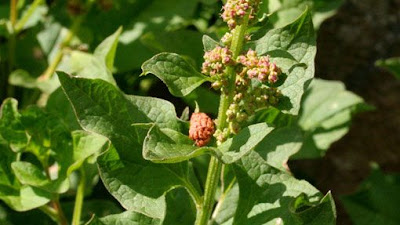Health Benefits OF Good King Henry
 |
| Good King Henry Vegetable Health Benefits |
GKH Is A Hardy Perennial Which Reaches A Peak And Unfold Of 65cm (2'6"). It Grows Great In Fertile Humus-wealthy Soil And Prefers A Semi-shady Function. Genuinely Pest And Ailment Loose, It Is A Totally Flexible Plant Historically Used As A Perpetual Vegetable. About 30 Plant Life Will Feed A Circle Of Relatives Of Four.
Sow Seeds In May Additionally ½cm (¼") Deep, And Transplant At A Spacing Of About 45cm X 38cm (18" X 15"). Carry And Divide Whilst New Increase Happens In Spring If Person Plant Life Have Become Unwieldy, Replanting On The Identical Spacings As Before.
Harvest Leaves As Required To Be Used As A Spinach Replacement (soak In Salt Water For Half An Hour First, Discarding The Water Earlier Than Cooking Inside The Normal Manner For Spinach); Small Portions Can Also Be Used Chopped In Salads. Flower Buds Harvested In March Are Used Like Sprouting Broccoli And Blanched Shoots (harvested From April To June) May Be Used As An Alternative For Asparagus.
Precise-King-Henry Is Native To Europe And Changed Into Delivered To North America By Using The Early Ecu Colonists As A Potherb. It Now Grows Wild Here And There Inside The Northeastern United States And Canada.
Think About Appropriate-King-Henry As A Form Of Perennial Spinach, To Which It's Far Associated; Other Chenopodiums Consist Of Lamb’s-quarters (C. Album), Epazote (C. Ambrosioides), And Quinoa (C. Quinoa). Stems Up To Two Ft Tall Undergo Dark Inexperienced, Succulent, Arrow-fashioned Leaves With Easy Or Wavy Edges And A Mealy Undersurface. Spikes Of Tiny Greenish Flowers Appear From May Additionally Via September. In Early Spring, Pencil-thick Shoots Push Up From The Fleshy, Branching Roots, And These Are Prized, Especially In England, As An Alternative For Asparagus.
True-King-Henry Grows Satisfactory In Fertile, Nicely-drained Lawn Soil. It’s One Of The Few Herbs That Pick Partial Coloration. Buying A Plant Or Is An Smooth Manner To Get Began With This Herb. Seeds Are To Be Had But Can Be Slow To Germinate (set Up Plant Life Self-sow Pretty Quite Simply, But). Stratifying The Seeds (chilling Them In A Wet Medium Which Include Vermiculite) For A Few Weeks Improves Germination. Thin Or Transplant Seedlings To One To 2 Ft Apart. Fertilize The Plant Life Every So Often In The Course Of The Developing Season. Harvest Leaves Lightly And Shoots On No Account Until Vegetation Are 3 Years Old. If You Mulch The Plants Closely In Overdue Fall With Compost Or Leaf Mould, The Shoots Can Be White And Specifically Tender. The Leaves Are Maximum Gentle In Spring, Too. Installed Plant Life Can Be Divided In Early Spring.
Names! This Herb Has An Abundance Of Them. Except Good-King-Henry, Human Beings Have Known As It Allgood, Fats Fowl, Goosefoot, English Mercury, And Smearwort. The Starting Place Of The Name Top-King-Henry Is Open To Discuss. Mrs. C. F. Leyel, Writer Of Natural Delights (1938), Maintained That The Herb Was Named For King Henry IV Of France, Who Promised A Chicken In Every Peasant’s Pot; Precise-King-Henry Fattened The Chook And Then Was Cooked With It. (The Name Fat Chicken Commemorates The Use Of The Herb As Poultry Feed.) Other Writers Held That No Reference To A King Changed Into Supposed: The Herb Turned Into Known As Excellent-Henry (“king” Simply Slipped In Someway) To Distinguish It From A One-of-a-kind, Toxic Horrific-Henry, Named For A Mischievous Household Spirit From German Folklore. Still Others Said Correct Henry Become A Beneficial Spirit Who Finished Home Chores For A Saucer Of Cream. The Species Name, Bonus-henricus, Way “accurate Henry”, Whichever One It Refers To. The Typical Name, Chenopodium, Means “goosefoot” And Refers To The Form Of The Leaf.
Health Benefits Of Desirable King Henry:
- Asparagus
- Sorrel
- Stinging
- Sylvetta Arugula
- Miner’s Lettuce
- Dandelion
- Watercress
- True King Henry
- Jerusalem Artichokes
- Sea Kale
- Lovage
- Garlic Chives
- Rhubarb
- Salad Burnett
- Chicory
- Globe Artichokes
- Malabar Spinach
- Perennial Beans

Post a Comment